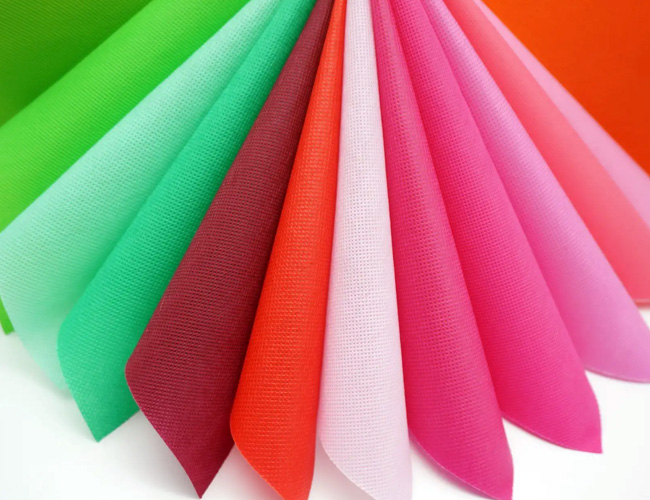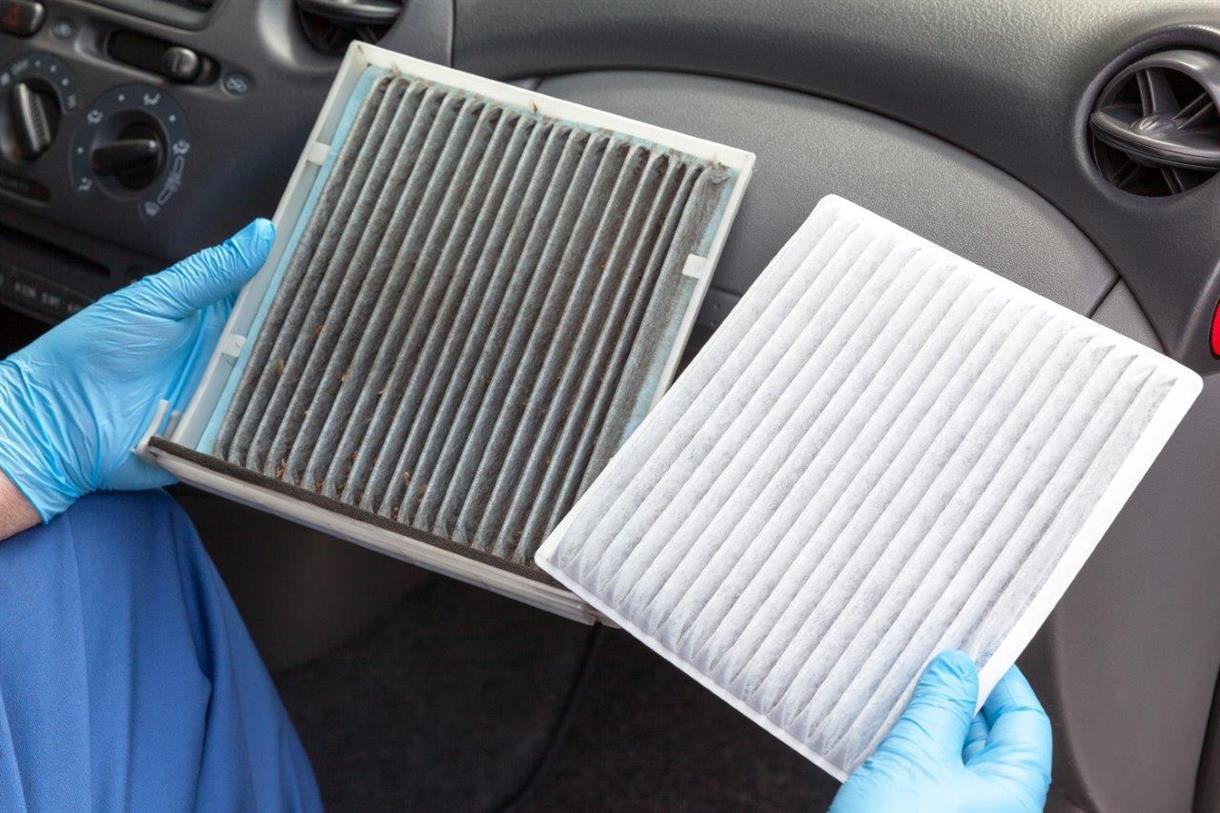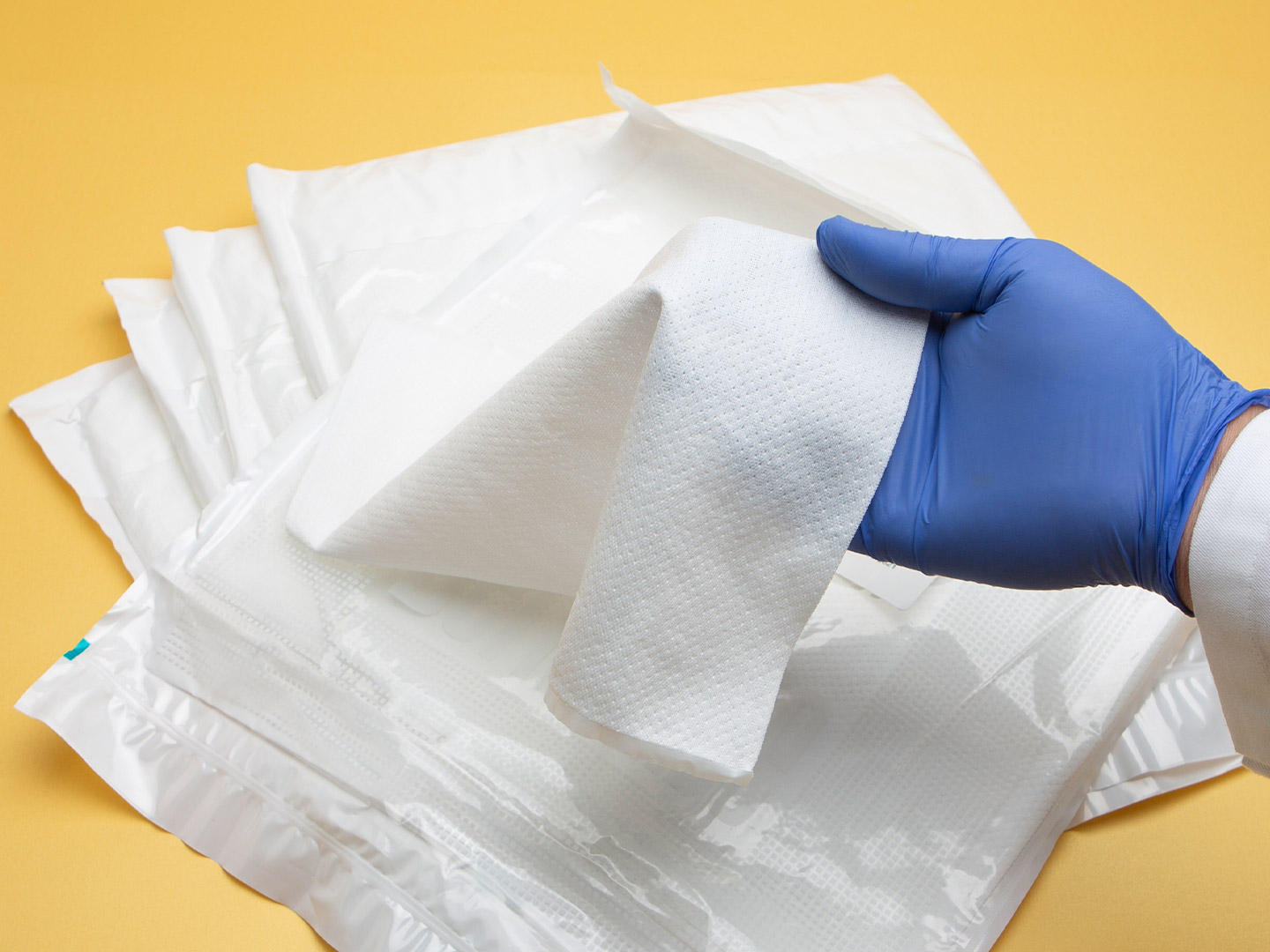
PP nonwoven fabric is composed of directed or random fibers. PP nonwoven fabric is a product of environmental protection material in modern applications. It is mostly made of polypropylene (pp material) granule as raw material, produced by high-temperature melting, silk spraying, laying outline, hot pressing, and coiling in one continuous step. This product is moisture-proof, breathable, flexible, light, non-combustible, easy to decompose, non-toxic and non-irritating, colorful, inexpensive, recyclable, and so on.
Polypropylene is a polymer made from propylene through a polymerization reaction. It is a white waxy material, transparent and light in appearance. The chemical formula is (C3H6)n, density is 0.89~0.91g/cm3, flammable, and melting point is 189℃. Softening at about 155℃, the use temperature range is -30~140℃. It can resist the corrosion of acid, alkali, salt liquid and many kinds of organic solvents below 80℃, and can decompose under the effect of high temperature and oxidation. Polypropylene is widely used in the production of garments, blankets and other fiber products, medical equipment, automobiles, bicycles, parts, conveying pipes, chemical containers, etc. It is also used in food and drug packaging.
The spunbonded method is a processing method in which the polymer is spun directly into a web and synthesized into a nonwoven fabric. It is mainly used for processing polypropylene, polyester and nylon filament nonwoven fabrics. The spunbonded method is used to make viscose fiber filament nonwoven fabric by wet spinning.
Why Choose Our G&F'S Spunbond Nonwoven Fabric?
G&F spunbond nonwovens are made of new, high quality polypropylene. Our machines are made with imported nozzles for uniform spraying and are available in 2.4m widths and 3.2m widths. Customers can choose different sizes of widths according to their needs.
G&F can produce medical and civil nonwoven fabrics according to the customer's requirements and quality specifications.
Our non-woven fabrics can be used in household, such as mattresses, sofas, closets, non-woven bags, tablecloths, etc.
Beauty and leisure: such as face masks; wrapped and embossed colored nonwovens have various flower patterns to choose from, which are of great use during festivals.
Medical applications:such as doctors' caps, surgical gowns, shoe covers, sheeting, etc..
In agriculture: such as agricultural land film with anti-UV content.
Welcome to inquire, G&F will customize the nonwoven fabric you need.
PP spunbond nonwoven fabric is generally from 8-120 grams of the more common. The whole width of the machine is 1.6m, 2.4m, 3.2m, which can be cut into different widths according to customers' needs. The colors are generally black, white and color, while the medical ones are generally blue and yellow.
Commonly used in household non-woven fabrics, such as non-woven bags, masks, etc., and can also print a variety of different patterns.
PP spunbond nonwoven is water-repellent. When water is poured on the surface of the nonwoven under static conditions, water droplets will form, but the water will slowly penetrate to the other side.
Therefore, the nonwoven is not waterproof. Moreover, it has a certain permeability, so if no other treatment is done, water will penetrate directly. If you want to make the non-woven fabric waterproof, you can laminate the surface with a PE film, so that it can achieve waterproof, moisture-proof and oil-proof effects.
1) Physical properties
PP non-woven fabric is a non-toxic, tasteless, milky white highly crystalline polymer, which is one of the light varieties of plastic, especially stable to water, with water absorption rate of only 0.01% in water for 14h. The molecular weight is between about 8-15 million, and the moldability is good. However, due to the large shrinkage rate, the original wall products are easy to dent, and the surface color of the product is good, easy to color.
2) Mechanical properties
PP nonwoven fabric has high cleanliness and regular structure, so it has excellent mechanical properties, and its strength and hardness and elasticity are higher than that of high-density PE. The outstanding features are strong resistance to bending fatigue, dry friction coefficient is similar to nylon, but not as good as nylon under oil lubrication.
3) Thermal performance
PP nonwoven fabric has good heat resistance, with melting point at 164-170℃, and the products can be sterilized at a temperature above 100℃. Under the action of no external force, 150℃ is not deformed. The embrittlement temperature is -35℃, and it will be embrittlement below -35℃, and the heat resistance is not as good as PE.
4) Chemical stability
PP nonwoven fabric has good chemical stability. In addition to being eroded by acid, it is relatively stable to various other chemical reagents, but low molecular weight aliphatic hydrocarbons and aromatic hydrocarbons can soften and swell PP nonwoven fabric. Chemical stability increases with the cleanliness.
5) Electrical performance
Nonwoven fabric has excellent high-frequency insulation performance. It almost does not absorb water, so the insulation performance is not affected by humidity. It has a high dielectric coefficient, and with the rise of temperature, it can be used to make electrical insulation products subject to heat. Breakdown voltage is also high, and it is suitable for making electrical fittings, etc. Good resistance to voltage and arc, but high static electricity and easy to age in contact with copper.
6) Weather resistance
Nonwoven fabric is sensitive to ultraviolet light, adding zinc oxide thiopropionic acid laureth, carbon black type similar emulsion filler etc. can improve its aging resistance.
1、Medical use
Non-woven fabrics can be found everywhere in hospitals. Whether it is sterilization cloth, mask, surgical gown, protective clothing, etc., the production of raw materials are non-woven-based materials. In addition, many women's intimate products will also use non-woven materials, including wet wipes, sanitary napkins and so on.
2、Domestic use
In home decoration, there are a lot of fabric accessories will also use non-woven materials, including wall coverings for wall decoration, bed sheets, bedspreads and so on.
3、Clothing
Clothing also has a non-woven figure, for example, the shirt lining, bonding lining, cotton clothing internal wadding, shaping cotton, etc., will be filled with non-woven.
4、Construction
Nonwoven materials are often used in the construction field. For example, the waterproof membrane and asphalt shingle used for roofing are made of non-woven fabric, and there are also cement bags and geotextiles. At the same time, in the road berm, building reinforcement and other areas, are available.
5、Industrial
The most common is the automotive industry. Many decorations inside the car are made of non-woven fabrics, including thermal insulation felt, shockproof felt, cushions, etc. Many canopies are directly made of non-woven fabrics.
6、Other uses
Non-woven fabric can also be used as a preliminary filter material. It can be used as sleeping bag material, or map cloth, calendar cloth, or oil painting cloth composition.
Whether a nonwoven can degrade or not depends on the raw material of the nonwoven. PP (polypropylene), PET (polyester), and polyester-viscose blend are all non-degradable materials. They are not resistant to aging, the aging mentioned here is actually a phenomenon of degradation, normal nature in the wind, sun and rain. Like PP non-woven fabric in the central region of China basically a year on the mess, and then half a year on the crumbling. But if put indoors can be put for many years, especially buried in the soil, according to scientists estimate about 300 years to degrade completely.
Polypropylene: polymer (polypropylene + back) - large screw high temperature melt extrusion - filter - metering pump (quantitative delivery) - spinning (spinning inlet up and down stretch pumping) - cooling - airflow traction - net curtain into the network - upper and lower pressure roller (pre-reinforcement) - mill hot rolling (reinforcement) - winding - rewinding slitting - weighing and packaging - finished products
Polyester: processed polyester chips - large spiral high-temperature melt extrusion - filter - metering pump (quantitative conveying) - spinning (spinning inlet up and down stretch pumping) - cooling - airflow traction - net curtain into a network - upper and lower pressure rollers (pre-reinforcement) - mill hot rolling (reinforcement) - winding - rewinding slitting - weighing and packaging - finished products
For more information about spunbond nonwoven fabric, please contact G&F GROUP INC, we will be sincerely glad to provide you with professional services.
Copyright Notice:
All Rights Reserved: https://www.groupgf.com/info-detail/pp-spunbond-nonwoven-fabric
Copyright Notice: This is an original (translated) article from G&F Group Inc., please indicate the source from G&F Group Inc.. If there is any infringement, please contact us first.
 Nonwovens in daily life ----- filtration
Nonwovens in daily life ----- filtration
 Nonwovens in daily life ----- automotive
Nonwovens in daily life ----- automotive
 What is SAP – superabsorbent polymers
What is SAP – superabsorbent polymers
 The Future of Global Nonwoven Wipes to 2029
The Future of Global Nonwoven Wipes to 2029